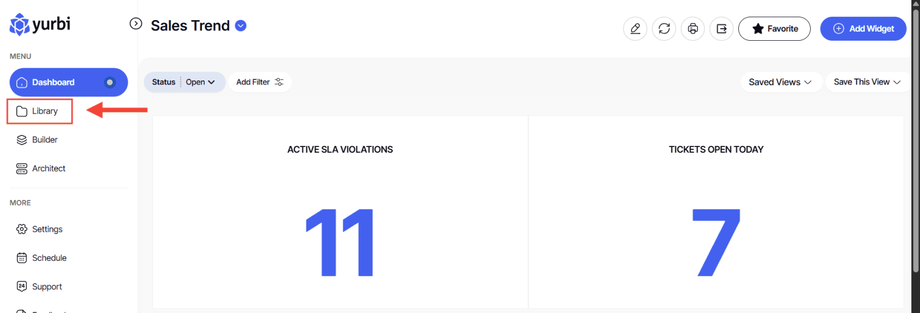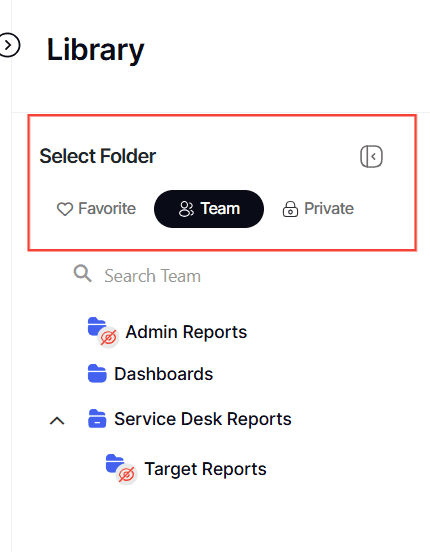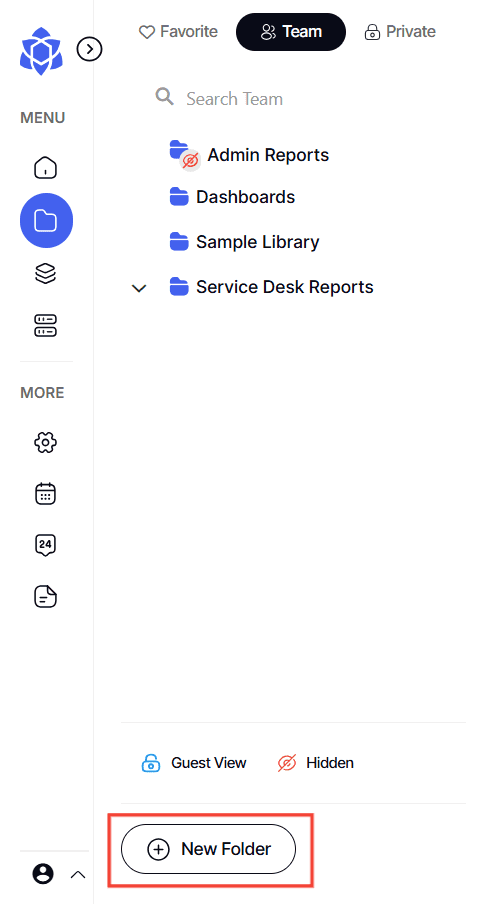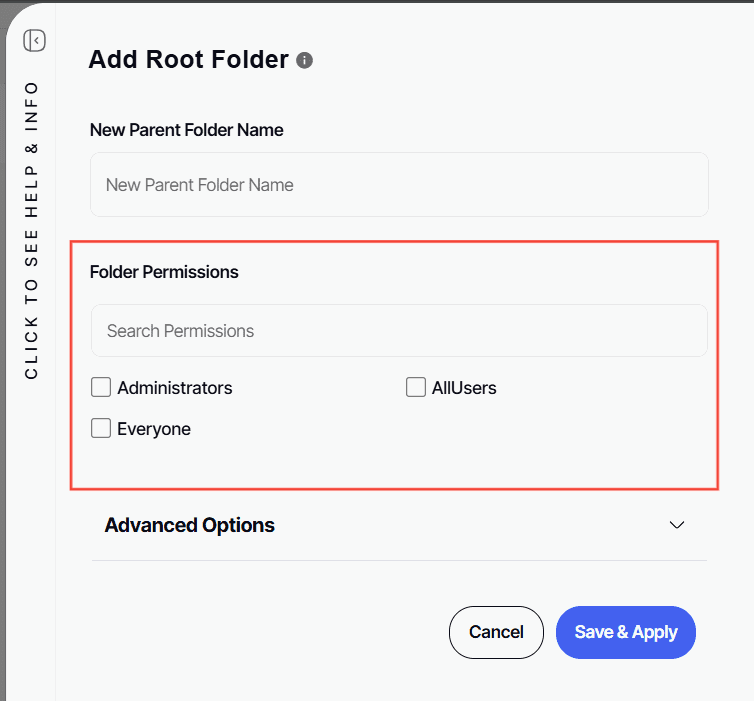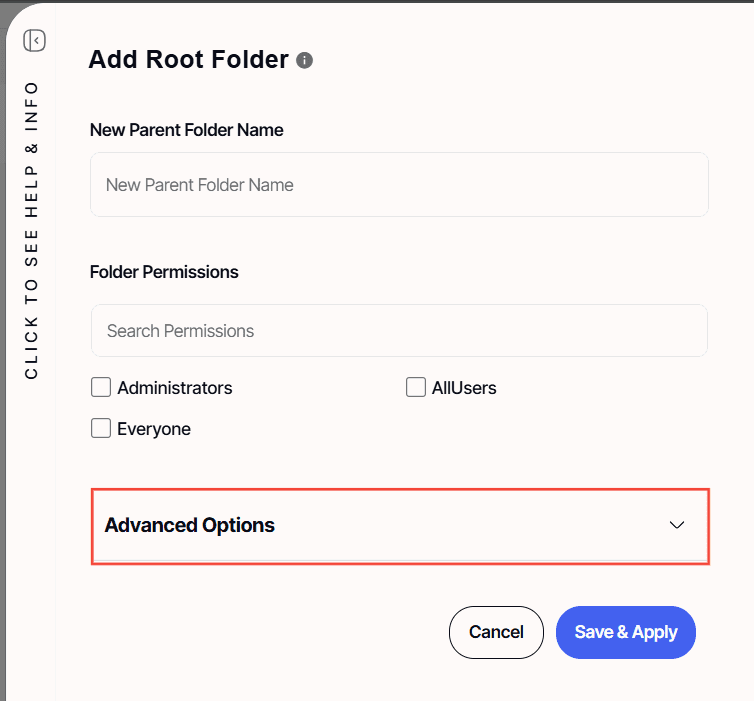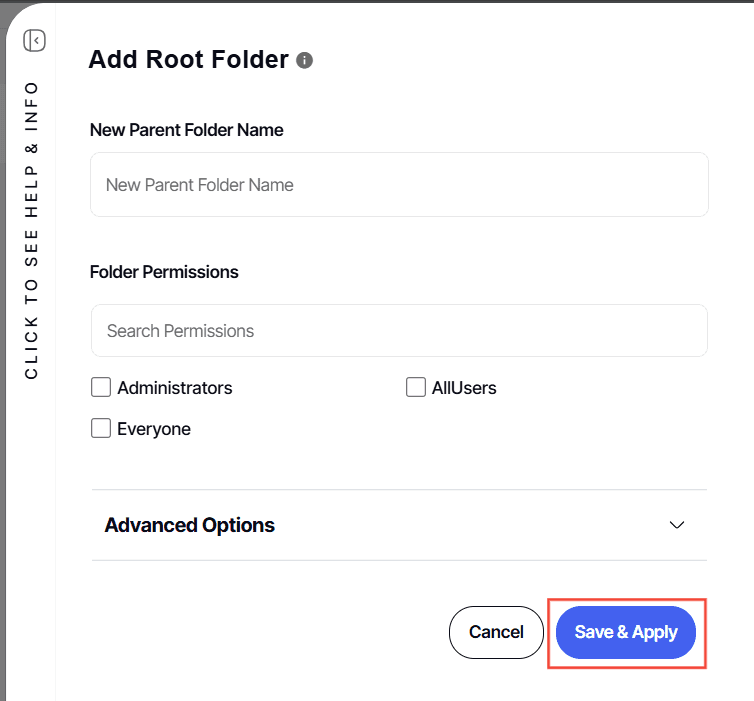How to create a library parent and hidden parent folder
Version: Yurbi v12
Role: Administrator and higher
Permission: Administrator or user with administrator privileges
Section 1: Creating Parent Folder
For a brand new library, only the administrator or any user with administrator privileges can create a new folder under Team Library subsection. On the other hand, any user can create a parent folder under Private Library subsection.
1. Click on the Library button located below to the Dashboard button.
2. Choose between the Team or Private subsection.
3. Scroll down and click New Folder
4. Type in New Parent Folder Name.
5. Select the permission for the folder based on your needs.
6. For optional configuration, Click Advanced Options
7. Tick the boxes based on your needs
- Allow Anonymous: Selecting this option will allow a "Guest" user or anonymous user to view the dashboard without needing to log in.
Please note, that all the reports on the dashboard should also be set to allow anonymous viewing.
- Hidden: Hidden folders offer a control mechanism for report access. Users with 'view' permissions cannot see these folders but can execute reports if they have the necessary rights. Users with 'modify' or higher permissions can see hidden folders.
- Without folder permissions, users cannot run the contained reports. However, if they have 'view' permissions for a hidden folder, they can execute the reports on dashboards or through drill-downs, even though the folder is invisible.
8. Click Save & Apply to create your parent folder.
You can repeat the same process to create a parent folder in the Private subsection! Once done, the parent folder will appear within the appropriate subsection.
Section 2: Creating a Hidden Parent Folder
Hidden Folders and Report Accessibility
Hidden folders are a unique feature designed to regulate visibility and user engagement with the reports they contain.
Overview
- Viewers: Users with viewing permissions won't visually see the hidden folder. However, they can execute any reports housed within it, provided they have the requisite permissions.
- Dashboard Use Case: This is beneficial when users are equipped with a dashboard that provides multiple reports. Hidden folders allow them to interact with the dashboard while preventing direct access to the individual reports.
- Drill-Down Report Use-Case: If a report, likely a drill-down, contains substantial data, you may not want users to run it independently. Instead, they can run a parent report that passes parameters and filters data within the drill-down. This ensures efficient data management.
- Modify Permissions or Higher: Users with modify permissions or more will be able to see and interact with the hidden folders, such as agents with modify permission, builder roles, or higher.
- Double Asterisk: (**) next to a folder signifies that the folder is hidden.
Default Permissions
Without explicit permissions for a folder, users are prevented from running any reports contained within that folder. However, even with view permissions on a hidden folder, users will not visually see it but can still execute the reports - either within dashboards or via drill-downs. This feature ensures that the reports are operational under predefined conditions, offering a balance between accessibility and control.
1. To create a hidden parent folder, follow the steps in creating a parent folder.
2. Then in Advanced Options, tick off Hidden check box.
3. Click Save & Apply to create your hidden parent folder.
And there you have it! You now know how to create a library parent and hidden parent folder!


